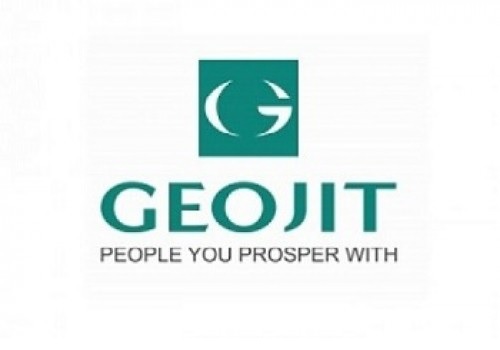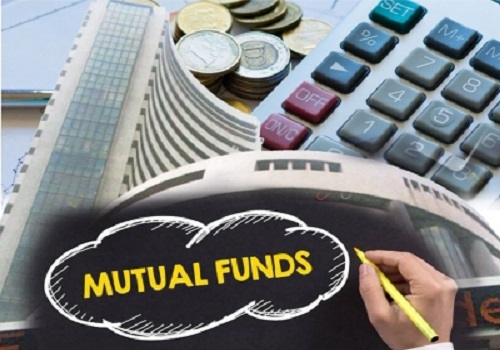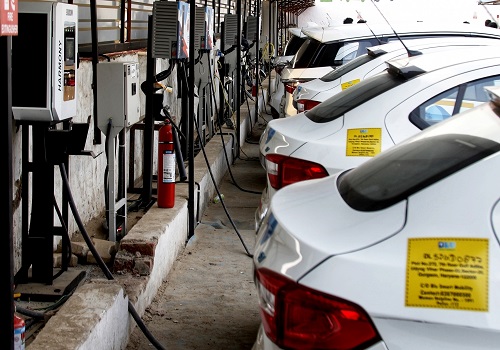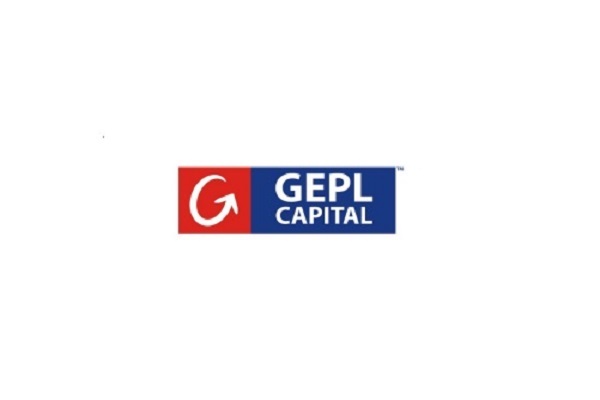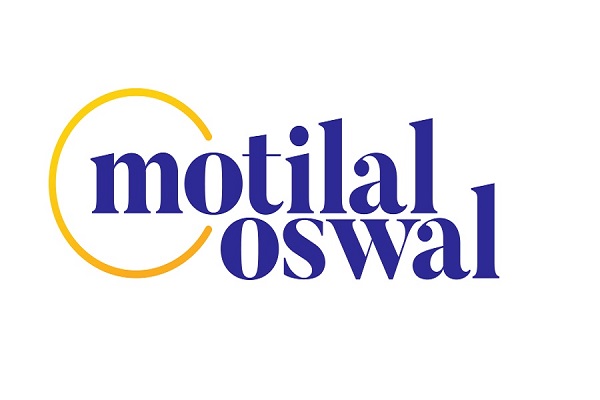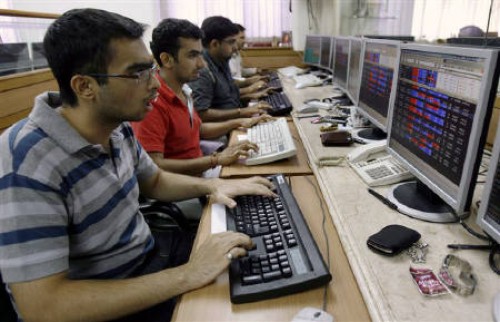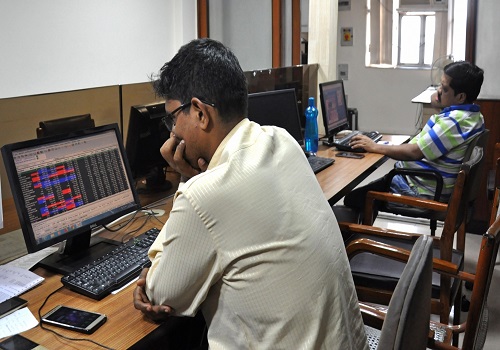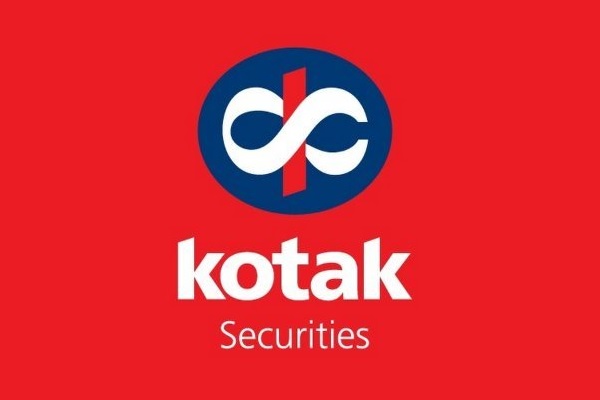Gold trading range for the day is 89945-95055 - Kedia Advisory

Gold
Gold prices climbed 0.98% to 93,169, as investors turned back to safe haven assets amid weak U.S. economic data and geopolitical tensions surrounding the stalled Ukraine-Russia peace negotiations. U.S. retail sales showed minimal growth in April, with consumer spending dampened by concerns over rising prices driven by tariffs. Additionally, the unexpected drop in U.S. PPI—due to a 1.6% decline in margins received by wholesalers and retailers—suggests that companies may be absorbing higher costs, hinting at weakening demand momentum. Fed Chair Jerome Powell's comments added another layer of caution, warning of potential future inflation volatility due to frequent supply shocks. He emphasized the importance of anchored inflation expectations and the Fed’s unwavering commitment to the 2% inflation target. Rising real interest rates and a higher neutral policy rate outlook also continue to shape investor sentiment. On the demand front, gold investment surged globally, with the World Gold Council reporting a 1% YoY increase in Q1 2025 demand to 1,206 metric tons, driven by a massive 170% jump in investment flows, especially into ETFs. In India, price-sensitive demand was weak due to a stronger rupee pushing local prices near record highs, prompting discounts of up to $16/oz. Technically, the market saw short covering as open interest fell by 6.64% to 11,079 while prices gained 904. Support is now at 91,555, with further downside possible to 89,945. On the upside, resistance is seen at 94,110, and a breakout could push prices toward 95,055.
Trading Ideas:
* Gold trading range for the day is 89945-95055.
* Gold rises as weak US data, Ukraine-Russia talks setback boost safe-haven demand
* Fed Powell warns of more volatile inflation and rising real rates
* Fed remains committed to its 2% inflation target, says anchored expectations are vital
Silver
Silver prices rose by 0.47% to 95,915, supported by a weaker U.S. dollar and disappointing U.S. economic data, alongside heightened geopolitical uncertainty. The absence of Russian President Vladimir Putin from peace talks renewed safe-haven demand. Weak U.S. retail sales and a sharp decline in the Producer Price Index—the steepest in five years—signaled slowing economic momentum and raised expectations for potential policy easing by the Federal Reserve. Additionally, ongoing speculation that the U.S. favors a weaker dollar to bolster trade competitiveness further pressured the greenback, making silver more appealing to foreign investors. From a macroeconomic perspective, softer-than-expected U.S. consumer inflation in April also supported precious metals by weakening the dollar. Fundamentally, the silver market is poised to record its fifth consecutive annual deficit in 2025, driven primarily by robust industrial demand. Industrial fabrication is forecast to rise 3%, potentially surpassing 700 million ounces—an all-time high—driven by structural demand from the green energy and electronics sectors. According to the Silver Institute, the global silver deficit is projected to narrow by 21% to 117.6 million troy ounces this year due to a modest 1% drop in demand and a 2% rise in supply. Technically, silver is showing signs of fresh buying with a 1.5% rise in open interest to 20,526. Support lies at 94,410, with further downside possible to 92,910. On the upside, resistance is expected at 96,800, and a breakout could lead to testing 97,690.
Trading Ideas:
* Silver trading range for the day is 92910-97690.
* Silver rises on softer dollar and weak economic data
* Putin's no-show in Turkey throws Ukraine talks into disarray
* US producer prices unexpectedly fall in April
Crude oil
Crude oil prices declined sharply by 2.71% to settle at 5271, weighed down by growing concerns over a potential global oversupply. A key driver of the bearish sentiment was the news that Iran is open to a deal with the U.S. in exchange for sanctions relief, potentially increasing Iranian oil supply into the global market. Saudi Arabia's support for the U.S.-Iran nuclear talks further reinforced expectations of more supply entering the system. Adding to the pressure, the EIA reported an unexpected 3.5 million barrel build in U.S. crude inventories, further indicating oversupply, despite falling crude stocks at Cushing, Oklahoma. On the demand side, the International Energy Agency (IEA) revised its global oil demand growth outlook for the remainder of 2025 to 650,000 barrels per day, down from 990,000 bpd in Q1. The slowdown is attributed to economic headwinds and the growing adoption of electric vehicles. However, the IEA slightly increased its full-year 2025 forecast to 740,000 bpd, expecting that stronger economic growth and lower oil prices will provide some support. In terms of inventories, U.S. gasoline and distillate stockpiles fell significantly, helping limit deeper losses in oil prices. Technically, crude oil is under long liquidation, as reflected by a 26.8% drop in open interest to 7,144. Immediate support is seen at 5199, with a break below opening the door to 5126. Resistance is pegged at 5330, with further upside possible up to 5388.
Trading Ideas:
* Crudeoil trading range for the day is 5126-5388.
* Crude oil sank as global oversupply concerns weighed on prices.
* IEA expects global oil demand growth to slow to 650,000 barrels per day for the rest of 2025
* Reports indicated that Iran is open to a deal with the US in exchange for sanctions relief, could increase Iranian oil inflows.
Natural gas
Natural gas prices declined by 2.41% to settle at 292.1, pressured by reduced short-term demand forecasts and seasonal maintenance at key LNG export facilities. Lower LNG feedgas flows, averaging 15.1 billion cubic feet per day (bcfd) so far in May—down from April's record of 16.0 bcfd—have softened export-driven demand. Notably, flows to Cameron LNG in Louisiana and Cheniere’s Corpus Christi plant in Texas dipped, with Corpus flows hitting a two-month low of 1.5 bcfd. A brief outage at Freeport LNG also contributed to lower utilization. Despite the dip, the U.S. remains the world’s top LNG exporter, and the EIA maintains a bullish long-term outlook for natural gas prices, anticipating higher demand from the power sector and global markets. The EIA projects U.S. dry gas production to reach a record 104.9 bcfd in 2025, rising further to 106.4 bcfd in 2026. Domestic gas consumption is also expected to climb to 91.3 bcfd in 2025 before easing slightly in 2026.On the storage front, U.S. utilities added 110 Bcf to natural gas storage for the week ending May 9, aligning with expectations. Technically, natural gas is under fresh selling pressure as open interest surged by 14.06% to 16,051. The commodity is finding support at 288.1, with a break lower potentially leading to 284.2. Resistance is seen at 297.7, and a move above could open the path to 303.4.
Trading Ideas:
* Naturalgas trading range for the day is 284.2-303.4.
* Natural gas fell on lower demand outlook, reduced LNG flows from maintenance.
* Average LNG feedgas fell to 15.1 bcfd so far in May from a record of 16.0 bcfd in April.
* Gas output in the Lower 48 states slipped to 103.7 bcfd so far in May from 105.8 bcfd in the previous month.
Copper
Copper prices edged higher by 0.3% to settle at 862.25, supported by a weaker U.S. dollar following soft U.S. inflation data and weaker-than-expected retail sales. The subdued economic indicators raised concerns about slowing consumer activity, indirectly aiding industrial metals like copper by tempering expectations of aggressive rate hikes by the Federal Reserve. However, gains were capped by bearish supply-demand fundamentals, as the International Copper Study Group (ICSG) doubled its 2025 global copper surplus forecast to nearly 300,000 tonnes due to rising production and downgraded demand growth amid global economic uncertainties and trade policy risks. On the supply side, the global refined copper market registered a 61,000 metric ton surplus in February, narrowing from January's 90,000-ton surplus. However, when adjusted for bonded warehouse inventory shifts in China, the surplus stood at 76,000 tons in February. Meanwhile, China's imports of unwrought copper and related products in April remained unchanged year-on-year at 438,000 tons, with total imports for the first four months of 2025 falling by 3.9% to 1.74 million tons. Notably, Shanghai Futures Exchange inventories plummeted 60% in April to 89,307 tons, marking the steepest monthly drop on record, signaling strong domestic drawdown. Technically, the copper market is under short covering, with open interest falling 16.71% to 3,919. Support is now seen at 854.8, with a break below likely to test 847.3. Resistance is at 866.4, and a breakout above may push prices toward 870.5.
Trading Ideas:
* Copper trading range for the day is 847.3-870.5.
* Copper rises as dollar dips on soft US inflation and weak retail sales data.
* 90-day US-China tariff pause fails to dispel long-term trade worries
* ICSG doubled its 2025 global surplus forecast to nearly 300,000 tonnes
Zinc
Zinc prices declined by 0.58% to settle at 259.05, as initial optimism surrounding the 90-day tariff pause agreement between Beijing and Washington faded, bringing demand concerns back into focus. Market sentiment was further weighed by uncertainty regarding longer-term demand prospects despite a recent pullback in LME zinc inventories, which had reached a three-month high in mid-April before declining to 169,850 metric tons last week. On the supply side, there were reports of potential disruptions at a Russian mine under Zijin Mining, which produced 71,300 mt of zinc concentrate in 2024. However, the decision on halting operations remains pending. Internationally, rising zinc concentrate treatment charges (TCs) reflected expectations of increased supply due to added mining capacity in Russia and the DR Congo. Meanwhile, Chinese smelters, who had recently faced negative TCs, have ramped up production amid improving economics, supported by higher sulphuric acid prices and the conclusion of seasonal maintenance activities. According to the International Lead and Zinc Study Group (ILZSG), the global refined zinc market is projected to remain in surplus in 2025. Global demand is expected to rise by 1% to 13.64 million tons, while output is forecast to grow by 1.8% to 13.73 million tons. Technically, zinc is under long liquidation, with open interest falling by 10.47% to 1,899. Immediate support lies at 256.6, and a break below could drag prices to 254.1. Resistance is seen at 261.5, and a breakout could push prices toward 263.9.
Trading Ideas:
* Zinc trading range for the day is 254.1-263.9.
* Zinc dips as optimism over US-China tariff pause begins to fade.
* Zinc concentrate treatment charges (TCs) rose on global supply expectations
* Overseas ore supply disruptions noted, including potential Zijin mine halt
Aluminium
Aluminium prices declined by 1.19% to settle at 241.05, pressured by concerns surrounding global economic growth and weaker-than-expected industrial data. The temporary truce in U.S.-China tariff tensions failed to provide sustained support, as broader fears of a potential global recession continued to dampen metals demand. Furthermore, disappointing U.S. industrial production data for April added to the bearish sentiment—manufacturing output fell by 0.4% while mining activity also declined, reflecting subdued industrial momentum. Adding to the downside, aluminium inventories at Japan’s three major ports rose by 3.4% in April to 320,300 metric tons, highlighting slower regional demand. Meanwhile, aluminium production costs are declining as alumina supply improves across Southeast Asia, following last year's shortages. In China, the world’s largest aluminium producer, exports of unwrought aluminium and related products surged 17% year-on-year over the first ten months of the current fiscal year, reaching nearly 5.5 million tons. Domestic production in April rose 2.6% year-on-year, though it fell 2.9% month-on-month. Notably, the share of liquid aluminium in the domestic output dipped slightly to 74%. Looking ahead, Chinese operating capacity is expected to remain high, with new capacity ramp-ups in Yunnan expected to begin production in May and expand further in Q3. Technically, the market is under long liquidation, with open interest falling by 11.7% to 3,360. Aluminium finds support at 239.3, with further downside potential to 237.5. Resistance is seen at 243.6, and a breakout could lift prices toward 246.1.
Trading Ideas:
* Aluminium trading range for the day is 237.5-246.1.
* Aluminium falls as US-China tariff truce spurs caution, recession fears weigh.
* Japan's April aluminium stocks rise 3.4% m/m
* Global aluminium output rises 2.3% year on year in March – IAI
Cotton candy
Cotton candy prices settled down by 0.33% at 54,450 on profit booking after recent gains fueled by concerns over shrinking domestic cotton crop estimates. The Cotton Association of India (CAI) has revised its crop projection downward by 4 lakh bales to 291.30 lakh bales (170 kg each), primarily due to lower production in Maharashtra. Earlier estimates stood at 295.30 lakh bales. Total cotton supply until the end of March, including imports, is projected at 306.83 lakh bales, factoring in 25 lakh bales of imports and opening stocks of 30.19 lakh bales. End-of-March stocks are estimated at 127.83 lakh bales, including 27 lakh bales with mills and 100.83 lakh bales with agencies like CCI and Maharashtra Federation. Cotton exports for the 2024-25 season are estimated at 16 lakh bales, significantly down from last year’s 28.36 lakh bales, while closing stocks for September 2025 are also projected lower at 23.49 lakh bales versus last year’s 30.19 lakh bales. Reflecting domestic production pressures, India’s cotton imports are expected to more than double to 33 lakh bales, compared to 15.20 lakh bales last season, with 25 lakh bales already arriving by March-end. Globally, the 2024/25 cotton balance sheet shows lower production in Argentina, Cote d’Ivoire, and others offset by increased output in China, leading to a slight overall decline. Technically, the cotton candy market is under long liquidation with open interest dropping by nearly 12% to 213 contracts. Prices are currently supported at 53,640, with potential downside to 52,840 if support breaks. Resistance lies at 55,120, and a sustained move above could see prices testing 55,800.
Trading Ideas:
* Cottoncandy trading range for the day is 52840-55800.
* Cotton dropped on profit booking after prices gained as CAI expects a shrinkage in the domestic crop further.
* Cotton exports for the 2024-25 season are pegged at 16 lakh bales, lower by 12.36 lakh bales over previous year’s 28.36 lakh bales.
* The closing stock for 2024-25 season at end of September 2025 is estimated lower at 23.49 lakh bales from same period last year’s 30.19 lakh bales. I
* In Rajkot, a major spot market, the price ended at 26086.7 Rupees dropped by -0.17 percent.
Turmeric
Turmeric prices ended marginally higher by 0.01% at 14,486, supported by concerns over lower crop production and limited arrivals, despite a sharp increase in market inflows. Although the area under turmeric cultivation expanded by 10% this season to 3.30 lakh hectares from 3 lakh hectares last year, untimely rains are expected to offset any production gains. Yields are anticipated to decline by 10–15%, particularly in the Nanded region, where small rhizomes and crop rots have been reported. This has sustained worries over lower output, although actual losses will become clearer as harvesting progresses across key producing belts. Despite the output concerns, upside momentum remained capped due to a significant jump in arrivals. Total arrivals surged to 57,500 quintals from 29,860 quintals in the previous session, reflecting pressure from harvest-season supply. Additionally, weak export inquiries weighed on market sentiment. On the trade front, turmeric exports during April–February 2025 rose by 11.51% year-on-year to 1.61 lakh tonnes, indicating strong overseas demand. However, a month-on-month drop of 2.97% in February exports reflects some recent softness. Technically, the market is under fresh buying with a 1.83% rise in open interest to 16,160, while prices ticked up 2. Support is seen at 14,272, with further downside possible to 14,058. Resistance is expected at 14,620, and a breakout above could lead prices toward 14,754.
Trading Ideas:
* Turmeric trading range for the day is 14058-14754.
* Turmeric settled flat as persistent concerns about low arrivals and lower production estimates.
* However upside seen limited due to increased arrivals and owing to weak export enquiries.
* Total arrivals rose to around 57,500 quintals, up significantly from 29,860 quintals in the previous session.
* In Nizamabad, a major spot market, the price ended at 14511.55 Rupees dropped by -0.45 percent.
Jeera
Jeera prices slipped by 0.16% to settle at 21,830, pressured by weak domestic buying and subdued export demand. The decline is attributed to the end of the retail season and a lack of active participation from foreign buyers. Additionally, increased arrivals and sufficient existing stocks added supply-side pressure. Total arrivals in major mandis rose to 32,900 bags, up from 28,000 in the previous session, further weighing on prices. The sowing of cumin in major producing states like Gujarat and Rajasthan was delayed by about a month this season due to unfavorable weather conditions. Despite the delayed start, production levels are expected to be similar to last year due to better crop conditions. Farmers reportedly still hold around 20 lakh bags of cumin, with only 3–4 lakh bags anticipated to be traded by the season's end, indicating a large carry-forward stock of nearly 16 lakh bags. On the export front, jeera shipments rose significantly by 62.55% year-on-year to 1.95 lakh tonnes during April–February 2025, highlighting strong annual demand. However, February exports dropped 23.92% from January, reflecting a recent slowdown. Technically, the market witnessed fresh selling with a 3.22% increase in open interest to 6,252 as prices declined 35. Immediate support is at 21,680, with further downside possible to 21,530. Resistance is seen at 21,940, and a move above could push prices toward 22,050.
Trading Ideas:
* Jeera trading range for the day is 21530-22050.
* Jeera dropped due to lower buying from domestic buyers and subdued export demand.
* Pressure also seen due to comfortable supplies and tepid export interest amid adequate existing stocks.
* In Feb 2025 around 12,996.88 tonnes of jeera were exported as against 17,083.31 tonnes in Jan 2025 showing a drop of 23.92%.
* In Unjha, a major spot market, the price ended at 22251.45 Rupees dropped by -0.12 percent.
Views express by all participants are for information & academic purpose only. Kindly read disclaimer before referring below views
